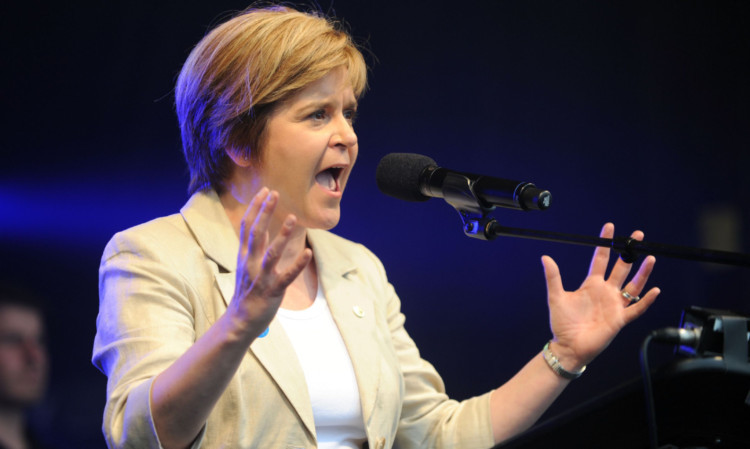
Alex Salmond has named March 24, 2016, as Scotland’s Independence Day if he wins next year’s referendum.
The First Minister claims a breakaway from the rest of the UK could be negotiated in less than two years with independence declared shortly before the Holyrood elections in 2016.
The date which is the anniversary of both the Union of the Crowns in 1603 and the signing of the Acts of Union in 1707 is included in the blueprint for independence, which is being launched on Tuesday.
The Scottish Government has printed an initial 20,000 copies of the White Paper, but has pledged to make it available to every Scot who wants it.
Deputy First Minister Nicola Sturgeon said: “This guide to an independent Scotland will be the most comprehensive and detailed blueprint of its kind ever published, not just for Scotland but for any prospective independent country.
“Our message to the people of Scotland is simple read it, compare it with any alternative future for Scotland and make up your own mind.”
The White Paper is in five parts with 10 chapters set out across more than 670 pages.
As well as making the case for independence, the White Paper also spells out what negotiations, preparations and agreements would be needed in the event of a Yes vote, as well as two types of policies which would be pursued by the Scottish Government.
The first tranche of policies are the starting position for negotiations in any post-referendum transition period, such as what currency the country would use and membership of the EU.
Mindful the majority of these positions will be in no way guaranteed, SNP ministers will use the White Paper to make a “common sense” pitch that striking a deal would be in the interests of both Scotland and the rest of the UK.
The pitch of “common sense versus scaremongering” is a major theme of the paper, according to insiders.
The second set of policies will be those which an SNP administration would hope to implement if elected as the first government of an independent Scotland a “mega manifesto” of sorts.
Strategists claim the document is not designed to see off the criticisms of the No camp, more that it’s pitched directly to voters.
Miss Sturgeon added: “The guide describes what a newly independent Scotland will look like.
“It illustrates how the powers of independence can be used to benefit individuals, families, communities and the nation as a whole and it answers a range of detailed questions that we have been asked.
“The route to a successful Scotland is greater economic growth that benefits all and which supports greater participation particularly amongst women in the workplace and the economy.
“With this guide providing the positive case for a vote in favour of independence, the dynamic of the debate will decisively shift with its publication.”
The proposed Independence Day of March 24 would follow the dissolution of the current Scottish Parliament session the day before, ahead of the May 2016 elections.
More than 20,000 copies of the White Paper have been printed but ministers have said it “will be made available to everyone who requests a copy”.
A summary document is also planned and it is understood the Scottish Government is considering sending a copy of this to every household.
The cost of producing the White Paper has not been revealed and the Tories yesterday hit out at the Scottish Government for failing to explain why £800,000 of public money in the form of interest payments received on loans to Scottish Water is being spent on the referendum.
A Better Together spokesman said: “This is the worst negotiating tactic possible. The Nationalists have announced the date when everything must be settled by to everybody who they would have to enter into talks with if we go it alone.
“It doesn’t exactly put them in a strong bargaining position.”

Enjoy the convenience of having The Sunday Post delivered as a digital ePaper straight to your smartphone, tablet or computer.
Subscribe for only £5.49 a month and enjoy all the benefits of the printed paper as a digital replica.
Subscribe